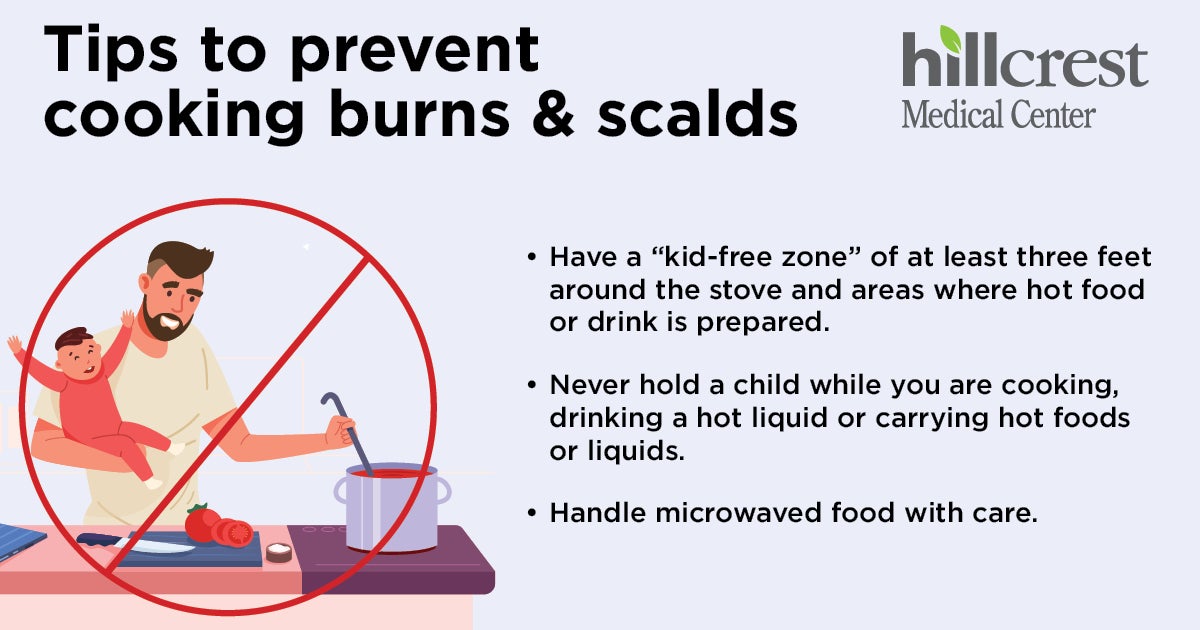
Feb. 5 – 11, 2023 is burn awareness week, and this year, providers are bringing special attention to scald burns. According to the American Burn Association, only 14% of non-fire thermal burns involving ranges or ovens were due to fire or flame. The rest were due to hot liquids, objects or surfaces.
Kara Hall, RN, nurse manager at the Alexander Burn Center, gives some advice for anyone who experiences a scald burn and how to avoid them in your home.
Common scald burns
“A scald burn usually occurs with a hot liquid or gas, and patients who get scald burns are usually pediatric or elderly,” said Hall. “The burn normally doesn’t look as deep as it actually is and can progress over time. Most burns take 24 to 48 hours to show their true colors.”
There are many ways to get a scald burn, but some of the most common are present in the kitchen and bathroom. They include hot bathwater or beverages splashing or spilling, cooking oils or liquids popping, and hot food being handled or dropped.
Tips to avoid scald burns
“A common scald burn we see is a toddler or infant reaching for a cup of liquid and pulling it down onto them,” said Hall. “In the last five or 10 years, we’ve also seen burns from hot ramen. That bowl gets extremely hot in the microwave, and some people drop it. It’s not just the hot water, but the noodles are extremely hot too, and they can stick to the skin and continue to burn.”
Here are some ways you can avoid scald burns in the kitchen and bathroom:
- Keep a kid-free zone in the kitchen of at least three feet from hot liquids or surfaces
- Never hold a child while cooking
- Keep pan and pot handles turned toward the stove
- Never set hot items on the edge of counters or tables
- Always check the temperature of food or beverages before allowing children to consume
- Keep bathing water at or below 100 degrees Fahrenheit
- Always check the temperature of bathwater with your hand
- Never leave a child unattended in the bath
When to get medical help
If you get a scald burn, rinse the burned area with tepid, not cold, water for at least 10 minutes. Remove any clothing or jewelry near the burn, as the fabric and metal can retain heat.
“We always say if the burn is on your face, hands, feet, joints or genitals, you need to see a doctor,” said Hall. “Scald burns can get worse over time. A first-degree burn might look red, and a second-degree burn may blister. Many second-degree burns will heal with topical treatment, but third-degree burns may require surgery and skin grafts depending on their size.”
The Alexander Burn Center at Hillcrest Medical Center is a regional burn center, serving patients in Oklahoma and surrounding states. Its providers offer comprehensive burn treatment for minor burns to serious injuries for patients of all ages. Call 918-579-4580 to learn more.
